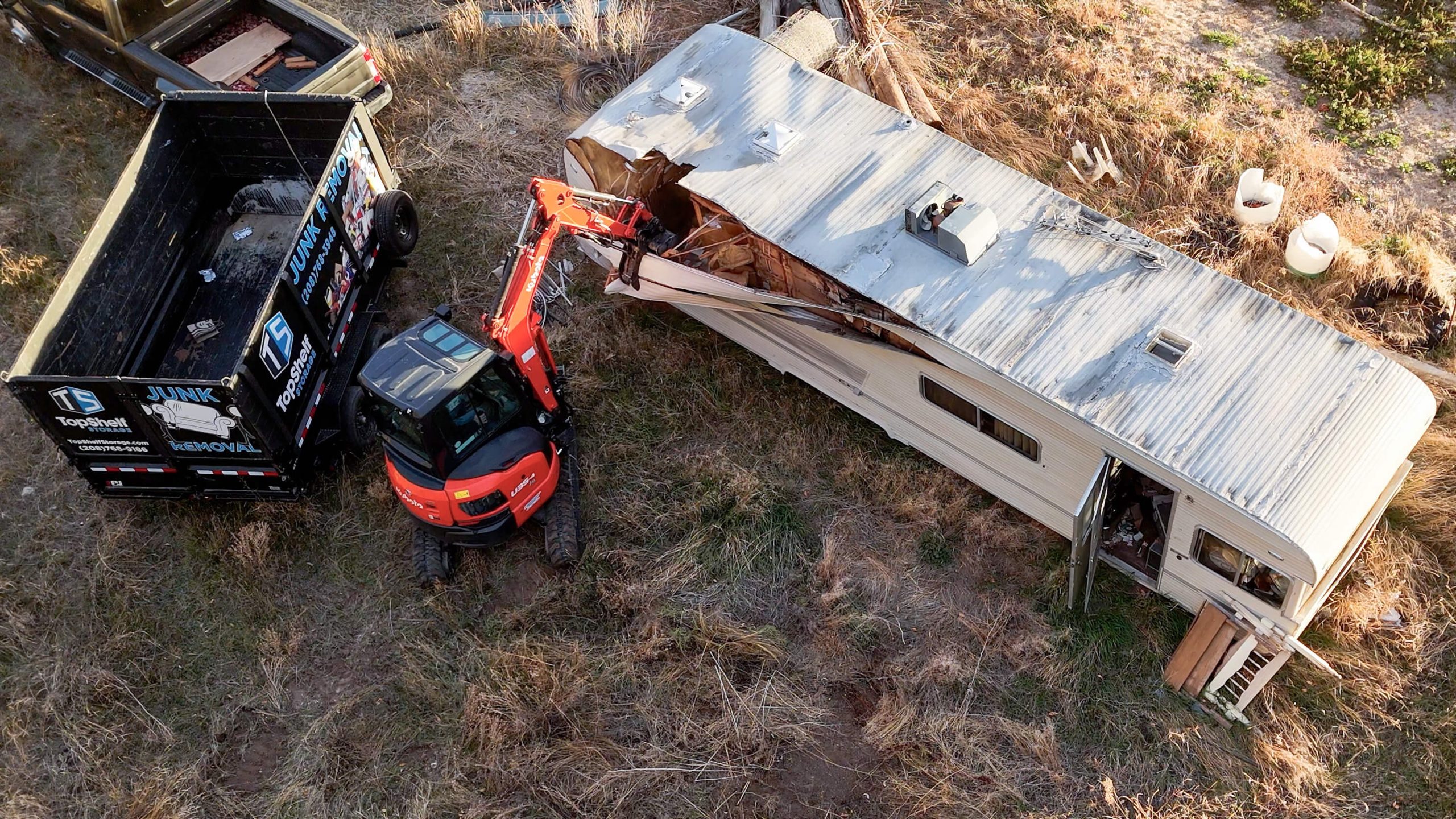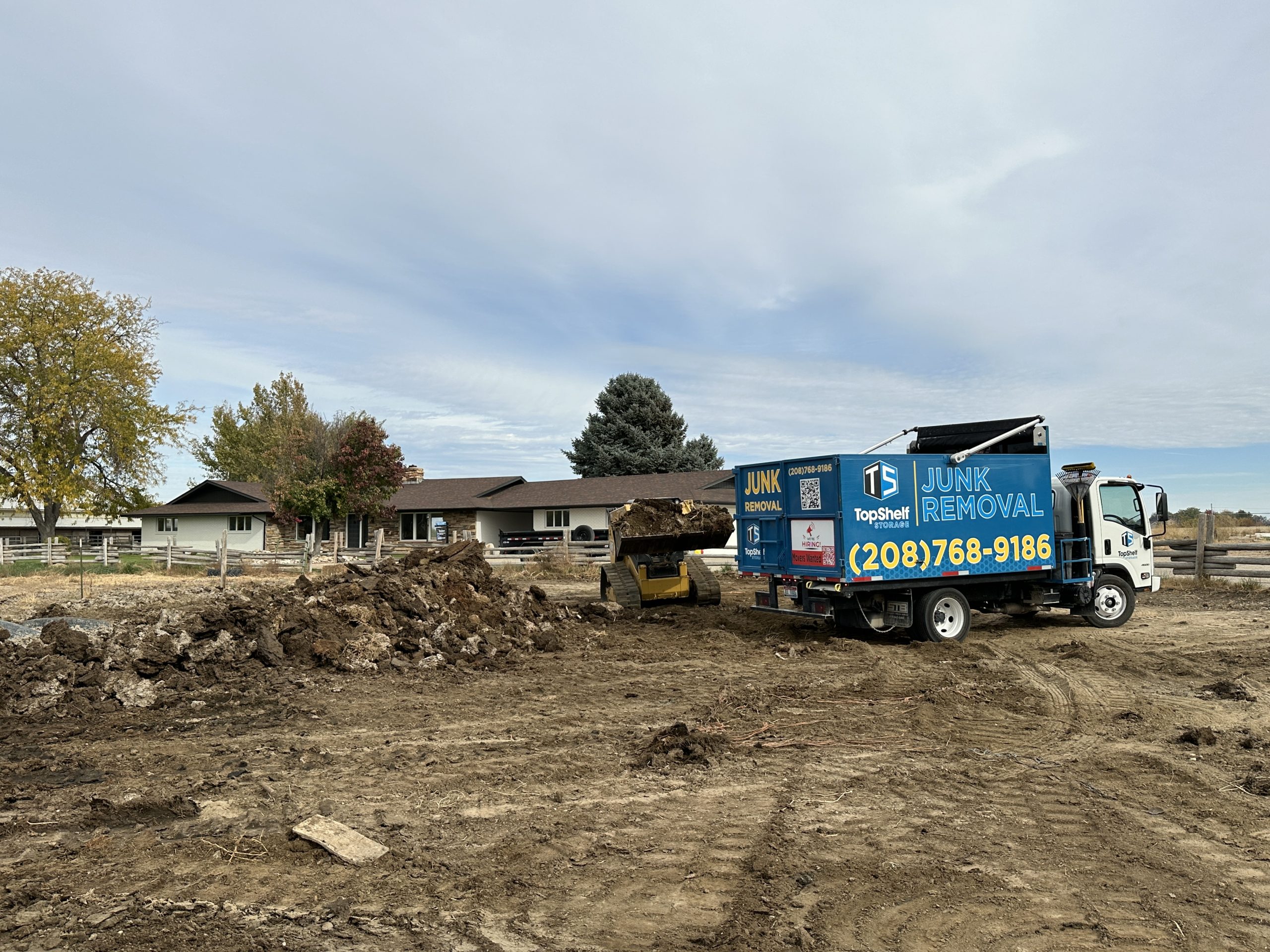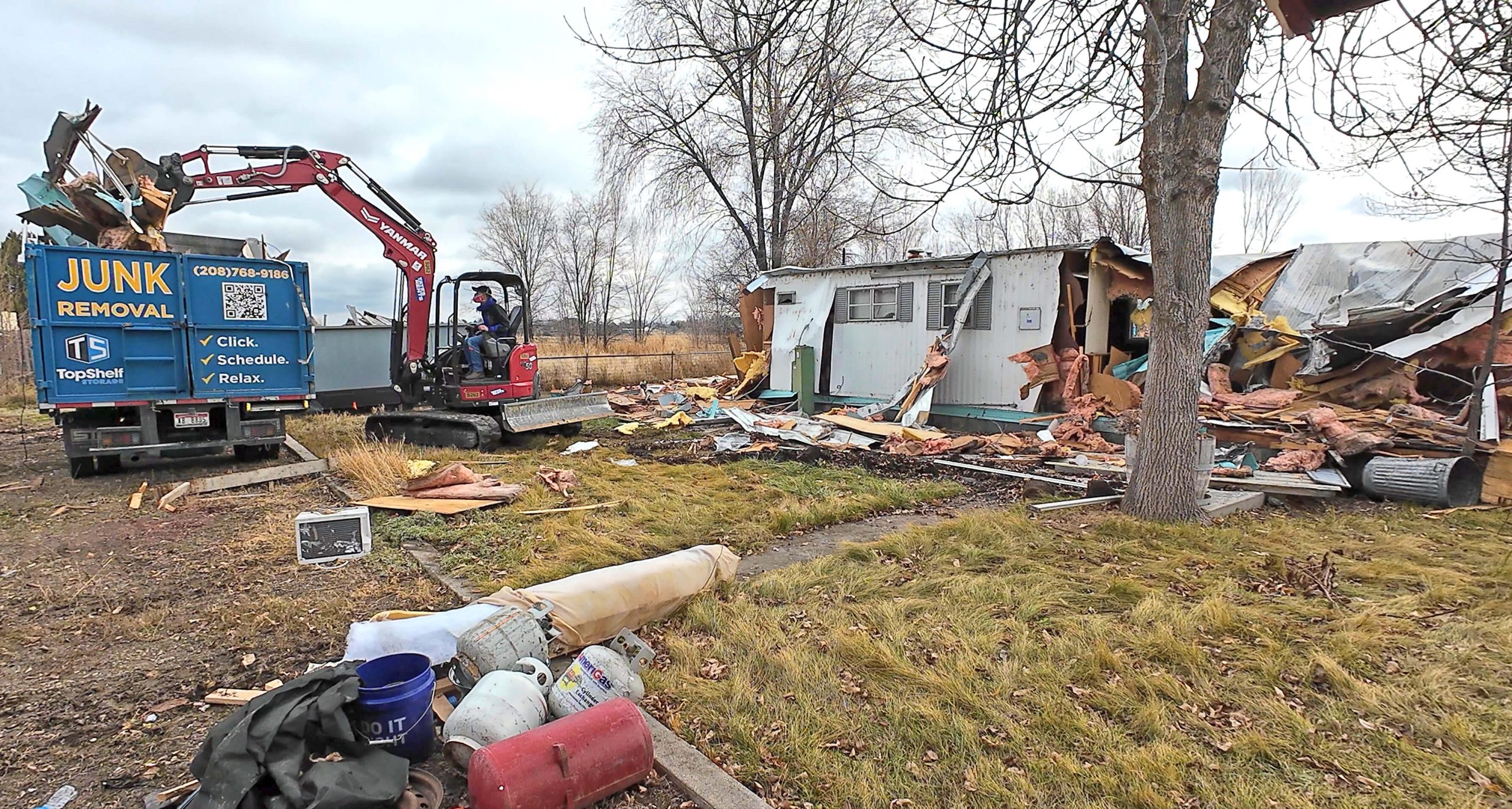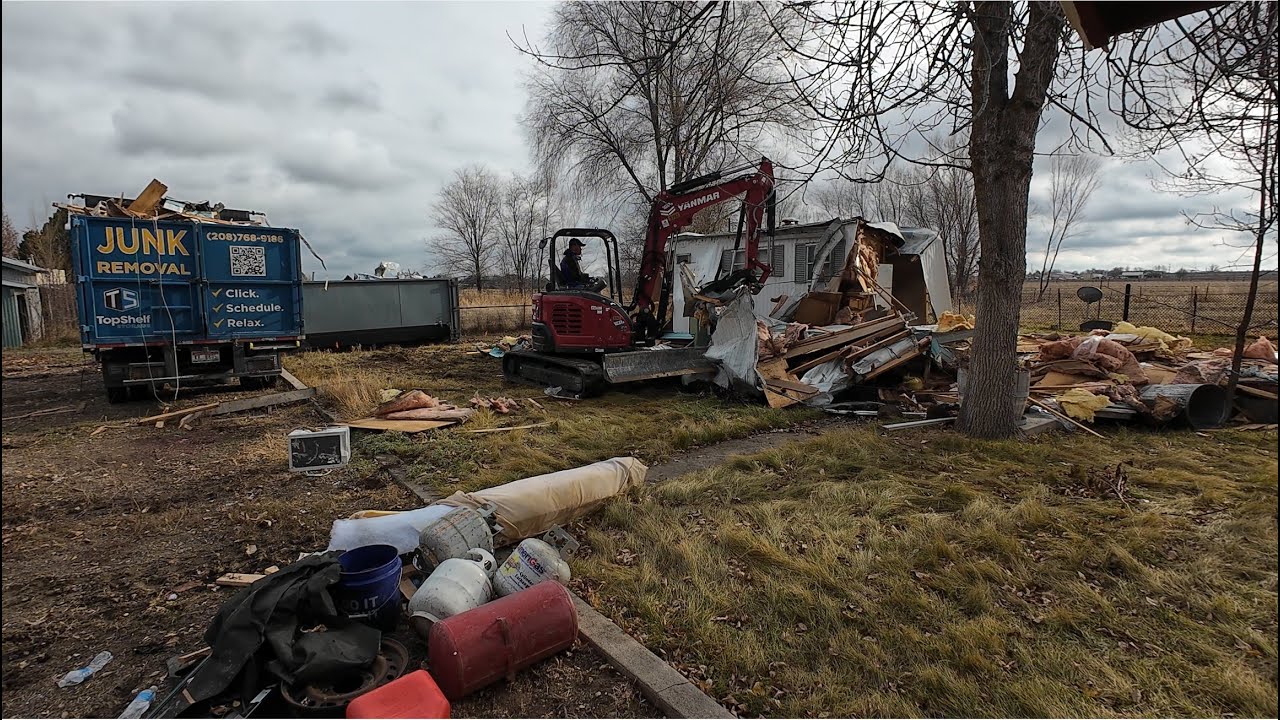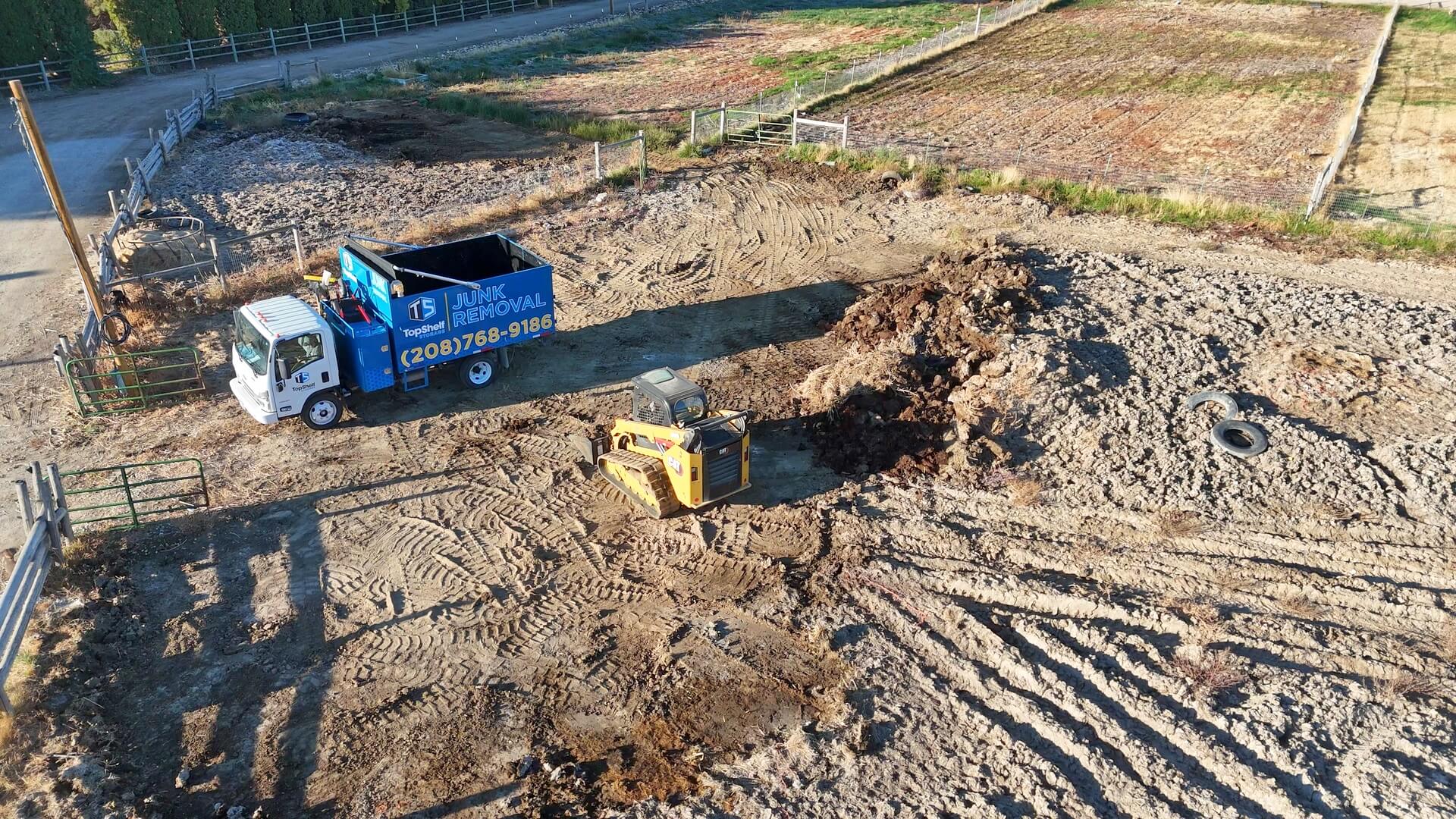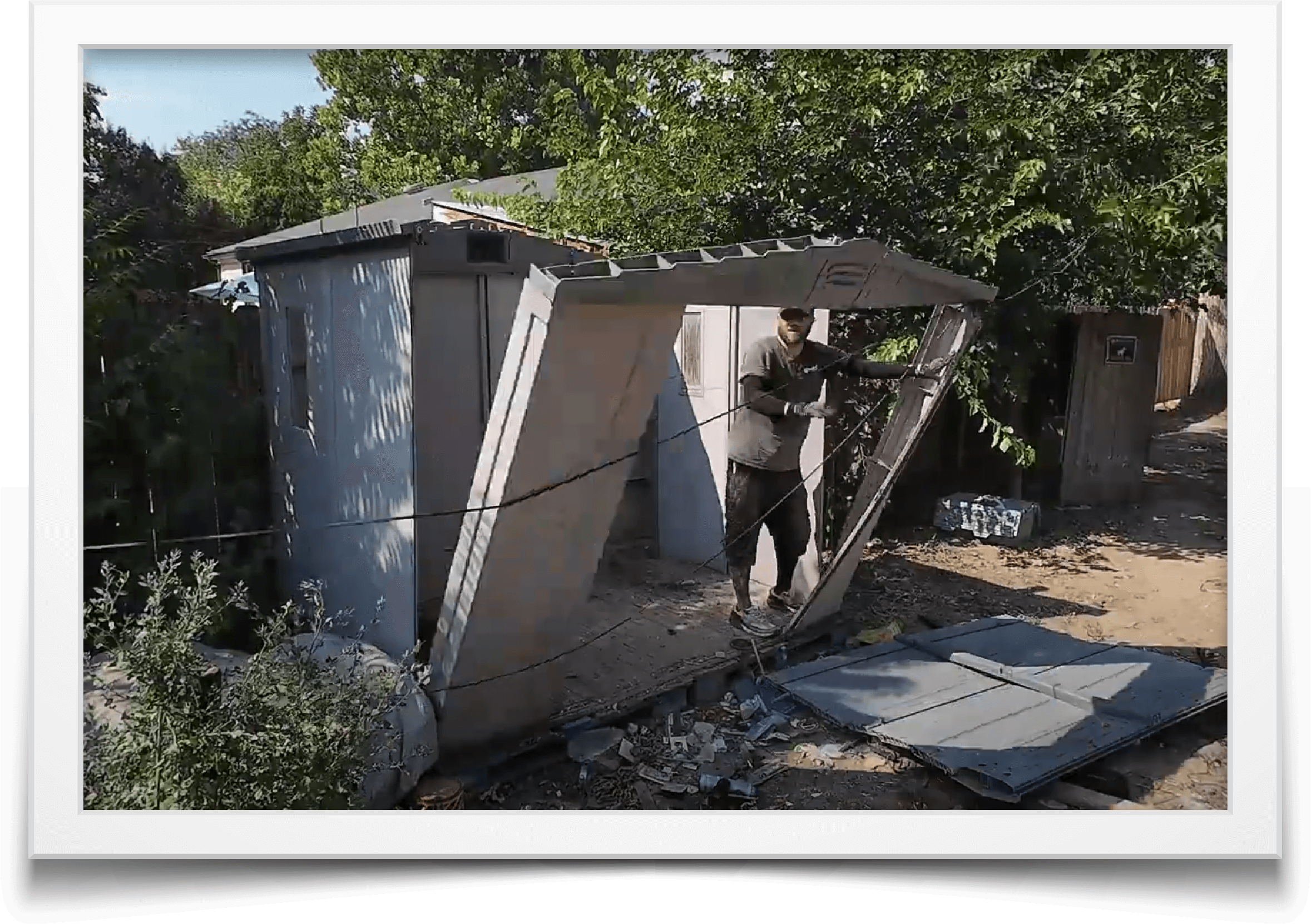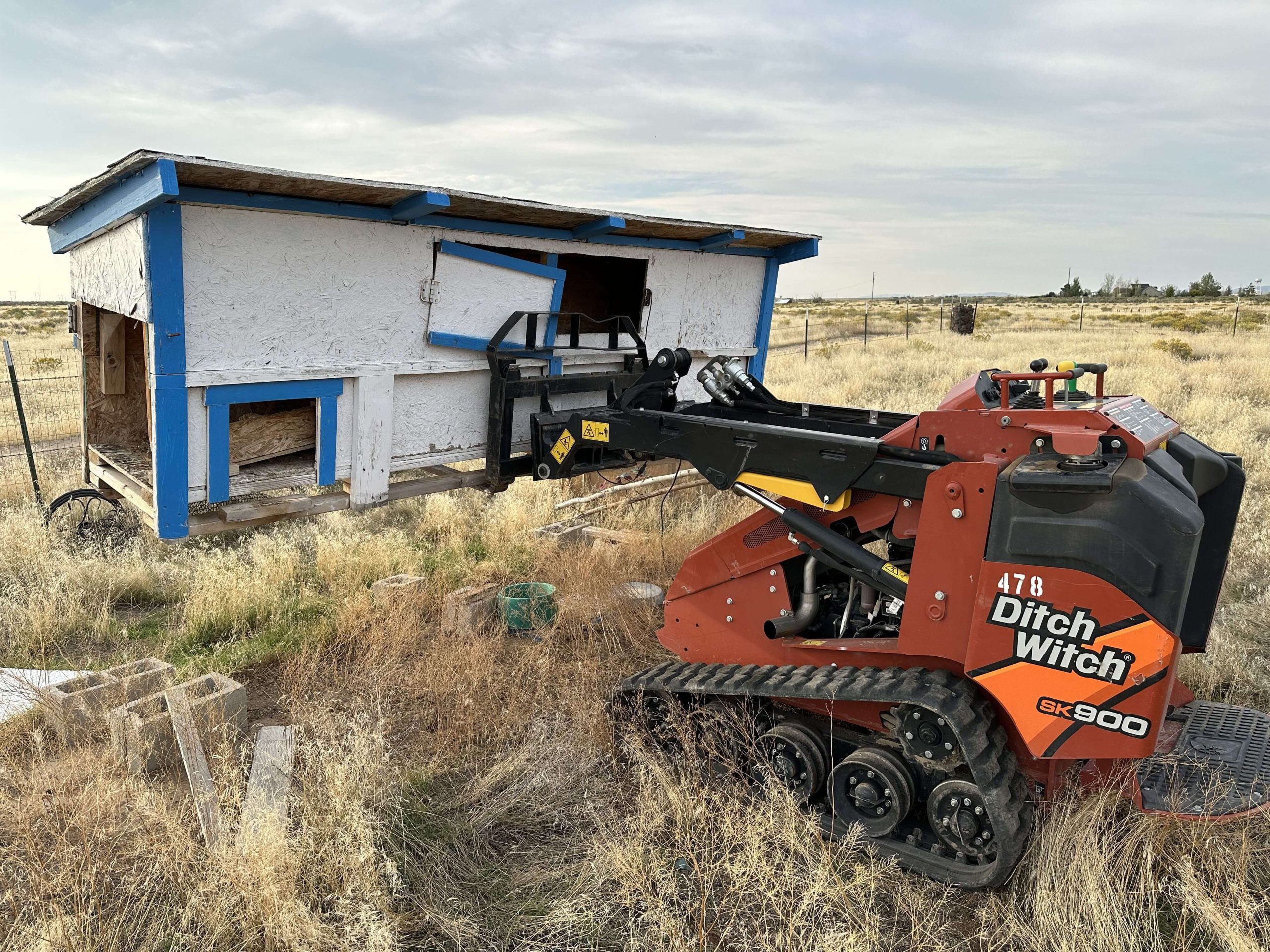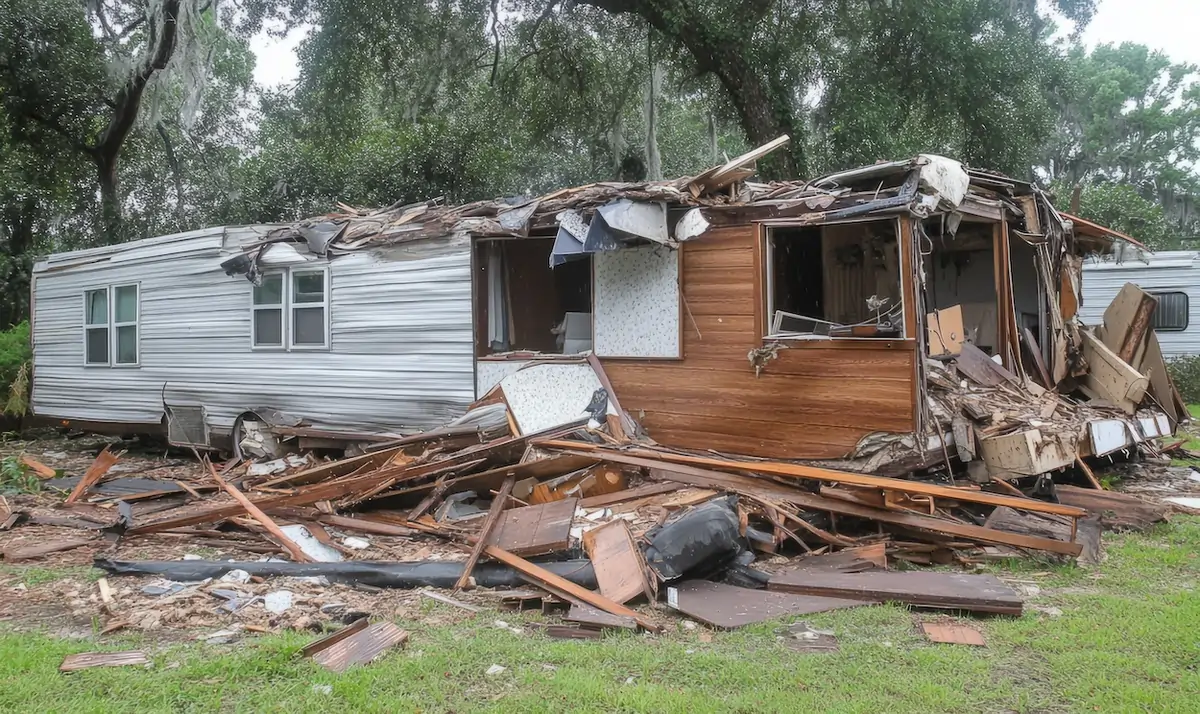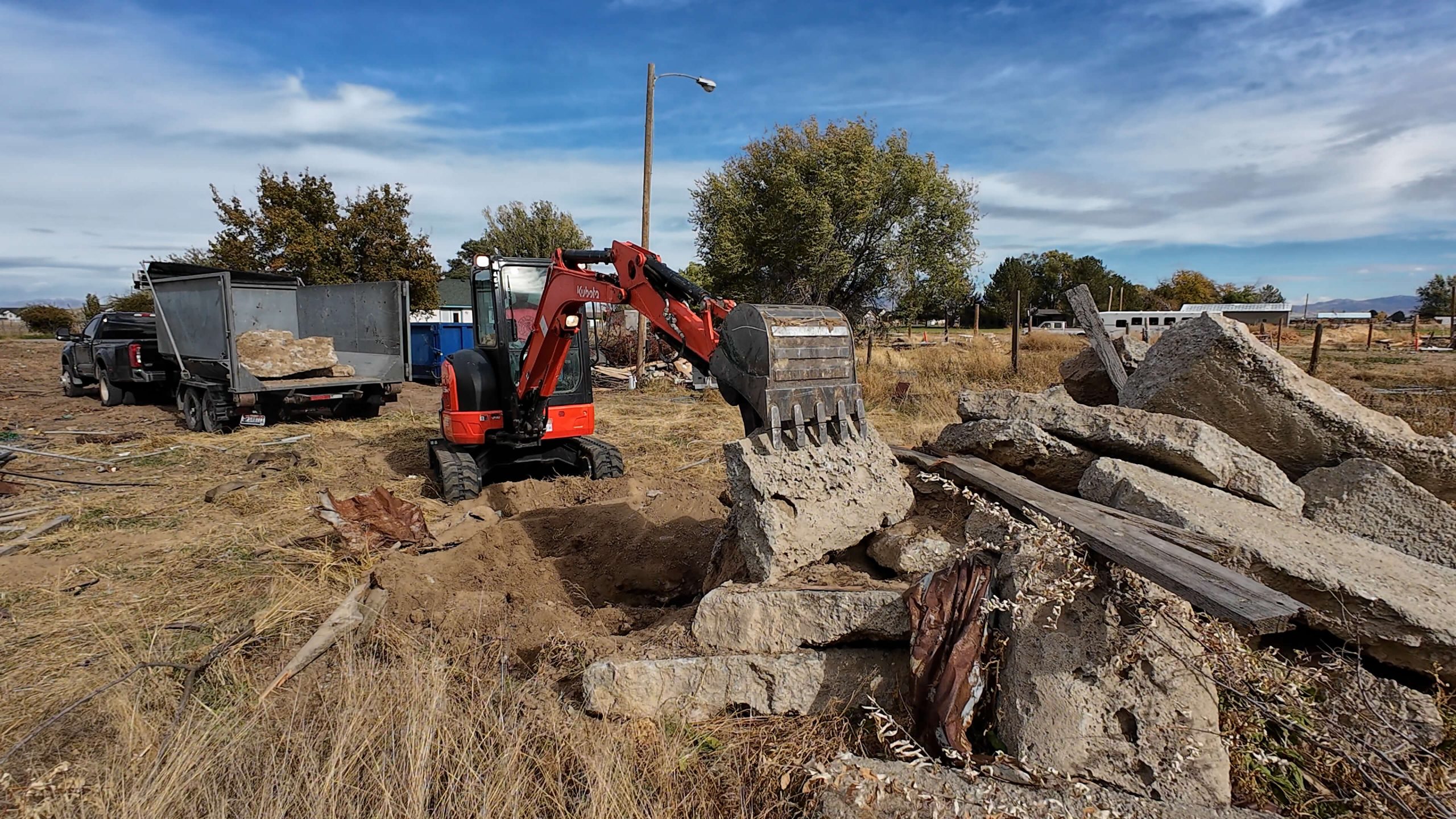So, you’ve got a deck. Or rather, what used to be a deck—now it’s just a sagging, sun-bleached liability with splinters sharp enough to perform minor surgery. Maybe you built it back when frosted tips were cool. Maybe you inherited it from the previous owners, along with their weird lawn gnome collection. Either way, it’s time to let it go.
Deck demolition doesn’t get the same dramatic glory as house demolition or concrete removal, but don’t let that fool you. Removing a deck is a full-contact sport with hidden hazards, stubborn hardware, and—if you’re lucky—a family of hornets living inside the railing.
You’re not just tearing down lumber. You’re unbuilding a shrine to past barbecues and bad DIY decisions. Let’s walk through it before you throw your back out swinging a crowbar.
Why Deck Demolition Isn’t as Simple as It Looks
On paper, it seems straightforward: pry it up, haul it out, toss a high-five. But real deck demolition? It’s all the annoying parts of construction, just in reverse. Nails bent from 15 years of weathering don’t pull easy. Boards don’t come up clean. Screws strip. Bolts rust. And you’ll spend half the time trying to figure out who built the damn thing and why they thought 800 lag bolts was necessary.
What people underestimate the most: weight and stubbornness. Wood gets waterlogged over time. Beams swell. Ledger boards cling to your house like a jealous ex. Stairs twist, and railings crumble in all the wrong directions.
Even the most solid deck removal plan becomes chaos the second you lift the first board. Especially if that board is covering black widows, rot, or a rat nest that looks like it pays rent.
Structural Risks of Leaving an Old Deck in Place
Let’s say you decide not to do the deck demolition. What then?
Simple: you’re playing a very dumb game of structural roulette.
Rotted posts mean the whole deck can drop faster than your Wi-Fi in a thunderstorm. Railings can break mid-lean (ask your drunk uncle about that one), and ledger boards can pull away from the house. That’s not just dangerous—it’s lawsuit dangerous.
Old decks get slippery. Loose nails snag kids’ clothes. Termites think you’re offering free real estate. If your deck is crumbling, you’re not “saving money,” you’re kicking the can down a hill made of splinters and liability.
Hire deck demolition services. Or at least search “deck demolition near me” before someone takes a fall and sues you into oblivion.
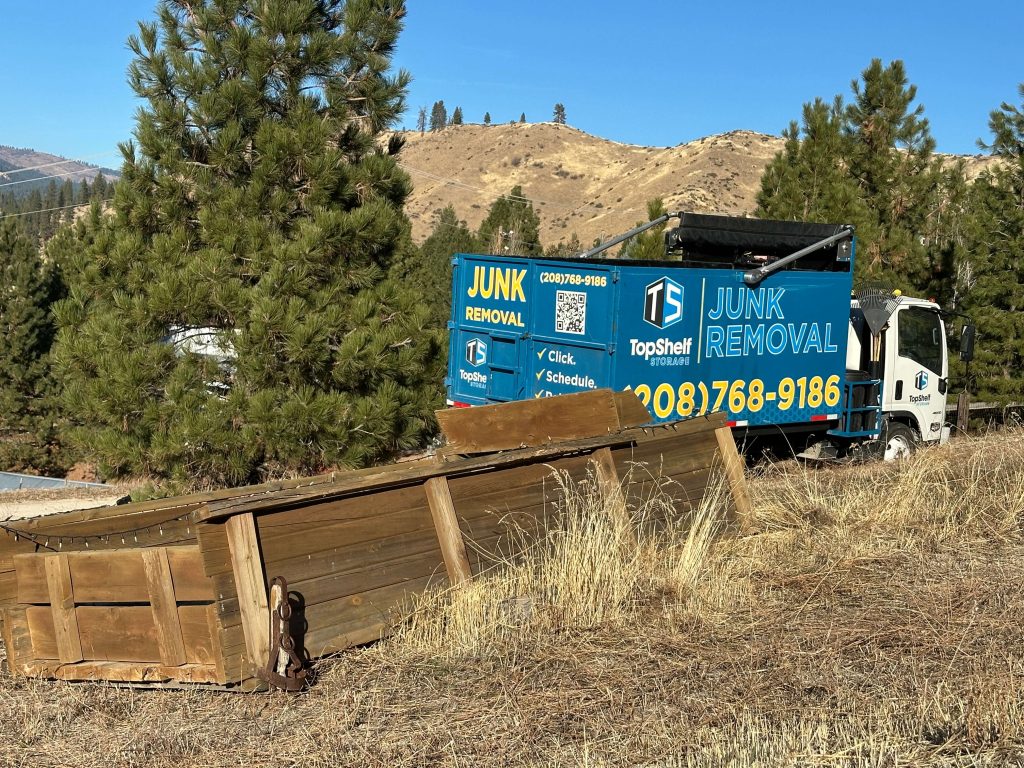
Step-by-Step Breakdown of a Professional Deck Removal
This isn’t a speedrun. Good deck demolition and removal is methodical and brutal in equal parts. Here’s how the pros go about it:
- Disconnection and Utilities Check
First, make sure electrical lines (deck lighting, outlets, hot tub wiring) are shut off or removed. Water connections too. One bad cut and you’re short-circuiting more than your patience. - Railing and Stairs Removal
Start at the edges. Pull the railings and stair sections first. This clears space and makes everything else easier to tackle. Or at least slightly less stupid. - Surface Board Removal
Pry up the deck boards. If they’re screwed down? Prepare for stripped heads, busted drills, and maybe a little crying. Pros often use duckbill deck wreckers or specialized pry bars. Amateurs use whatever’s in the garage and ten times more effort. - Joist and Beam Demolition
Once the surface is gone, you’ll see the skeleton—joists and beams. Cut them out in sections, especially if the lumber is treated and heavy. Don’t just let it collapse and hope for the best. This isn’t a Michael Bay movie. - Post Removal and Footings
Posts set in concrete are the final boss. You can pull them, cut them off at grade, or rent a mini-excavator and feel like a demolition god. If you’re hiring a demolition company, ask whether they include concrete demolition and removal or charge extra for it. That’s where the costs can sneak up on you. - Debris Disposal
And then there’s the mountain of trash you’ve created. Good demolition services will haul it all off. If you’re doing this DIY, rent a dumpster or get real friendly with your local dump staff.
Common Deck Materials and How They Affect Demolition
Deck demolition is not a one-material-fits-all operation. Different decks fight back in different ways.
Pressure-Treated Lumber:
Standard. Heavy. Often cracked or warped. Expect splinters and hidden screws. Burns well, but you probably can’t legally do that, so don’t.
Composite Decking:
Denser and more stubborn. Doesn’t pry up like wood. Often glued or hidden fastened. You’ll want power tools and maybe therapy after.
Redwood or Cedar:
Lighter and softer. Easier to dismantle—unless it’s been rotting for years, in which case it turns to mush mid-removal.
Metal Framing or Fasteners:
Expect resistance. Steel brackets rust into place. Grinder time. You might feel like you’re fighting a robot.
Deck removal pros show up with the right saw blades and pry tools based on the material. If you’re going it alone, do your research or prepare to discover how many different screws exist in the world and how none of your bits fit any of them.
What to Do After the Deck Is Gone
Now you’ve got a big, open space. Congrats. You’re halfway to freedom—or your next headache.
Here’s what to think about:
- Grading and Cleanup: There’s probably uneven ground, holes from footings, and random nails hiding like landmines. Grade it. Rake it. Sweep it. Don’t leave your lawn looking like a post-apocalyptic timber yard.
- New Project Planning: Are you building a new deck? Putting in a patio? Extending your lawn? Make that decision before the demolition if you want to reuse the space efficiently.
- Permit and Code Check: If your new project involves structure or utilities, check local codes. That includes electrical, drainage, and load-bearing specs. Just because you’re removing doesn’t mean you get to skip planning.
- Celebrate: Crack a beer. You did it. Or, if you paid someone else to do it, you supervised like a pro. Either way, that old deathtrap is gone and your backyard is finally breathing again.
Wrap-Up: You’re Not Just Removing Wood—You’re Making Room for Better
Deck demolition doesn’t need to be glamorous. But it should be done right. Whether you’re ripping up old lumber yourself or searching for “deck demolition and removal near me,” the goal is the same: clear the dead weight. Make space. Start fresh.
Because honestly? That creaky, warped platform was never going to fix itself. And neither will your weekend plans unless you take the first step.
Demolish wisely. Build smarter. And if you ever find a squirrel skeleton during the teardown—don’t ask questions. Just keep moving.


